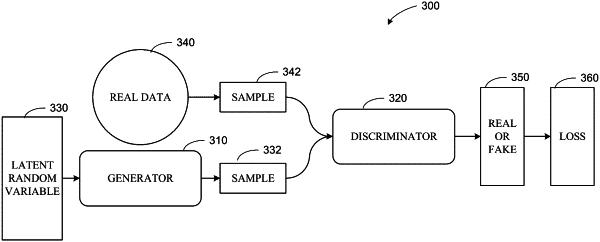| CPC G16H 10/00 (2018.01) [A61B 5/7267 (2013.01); G06F 9/451 (2018.02); G06N 3/044 (2023.01); G06N 3/08 (2013.01); G06N 20/00 (2019.01); G06N 20/20 (2019.01); G16H 10/60 (2018.01); G16H 15/00 (2018.01); G16H 40/67 (2018.01); G16H 50/30 (2018.01); A61B 5/7275 (2013.01); G06T 2207/20081 (2013.01); G06T 2207/20084 (2013.01)] | 14 Claims |

|
1. A synthetic time series data generation apparatus comprising:
memory storing instructions; and
at least one processor to execute the instructions to at least:
a) generate a synthetic data set including i) multi-channel one-dimensional time-series data and ii) associated annotation using a first artificial intelligence network model, the multi-channel one-dimensional time-series data including synthetic waveform signal data, the synthetic data set generated and having a first classification;
b) analyze the synthetic data set with respect to a real data set using a second artificial intelligence network model to classify the synthetic data set, the real data set collected from at least one patient data source and having a second classification, the second classification different from the first classification at least in that the first classification indicates synthetic data generation by a model and the second classification indicates data captured fora patient;
c) when the second artificial intelligence network model classifies the synthetic data set as having the first classification, adjust the first artificial intelligence network model, rather than the second artificial intelligence network model, using feedback from the second artificial intelligence network model to tune the first artificial intelligence network model and repeat a)-b), the feedback including the first classification of the synthetic data set by the second artificial intelligence network model, the feedback including a loss function computed between the real data set and the synthetic data set and an error gradient associated with the loss function to adjust at least one parameter of the first artificial intelligence network model; and
d) when the second artificial intelligence network model classifies the synthetic data set as having the second classification, output the synthetic data set for use in association with the second classification,
wherein use of the synthetic data set includes to impute synthetic waveform signal data as missing data to complete a captured waveform.
|